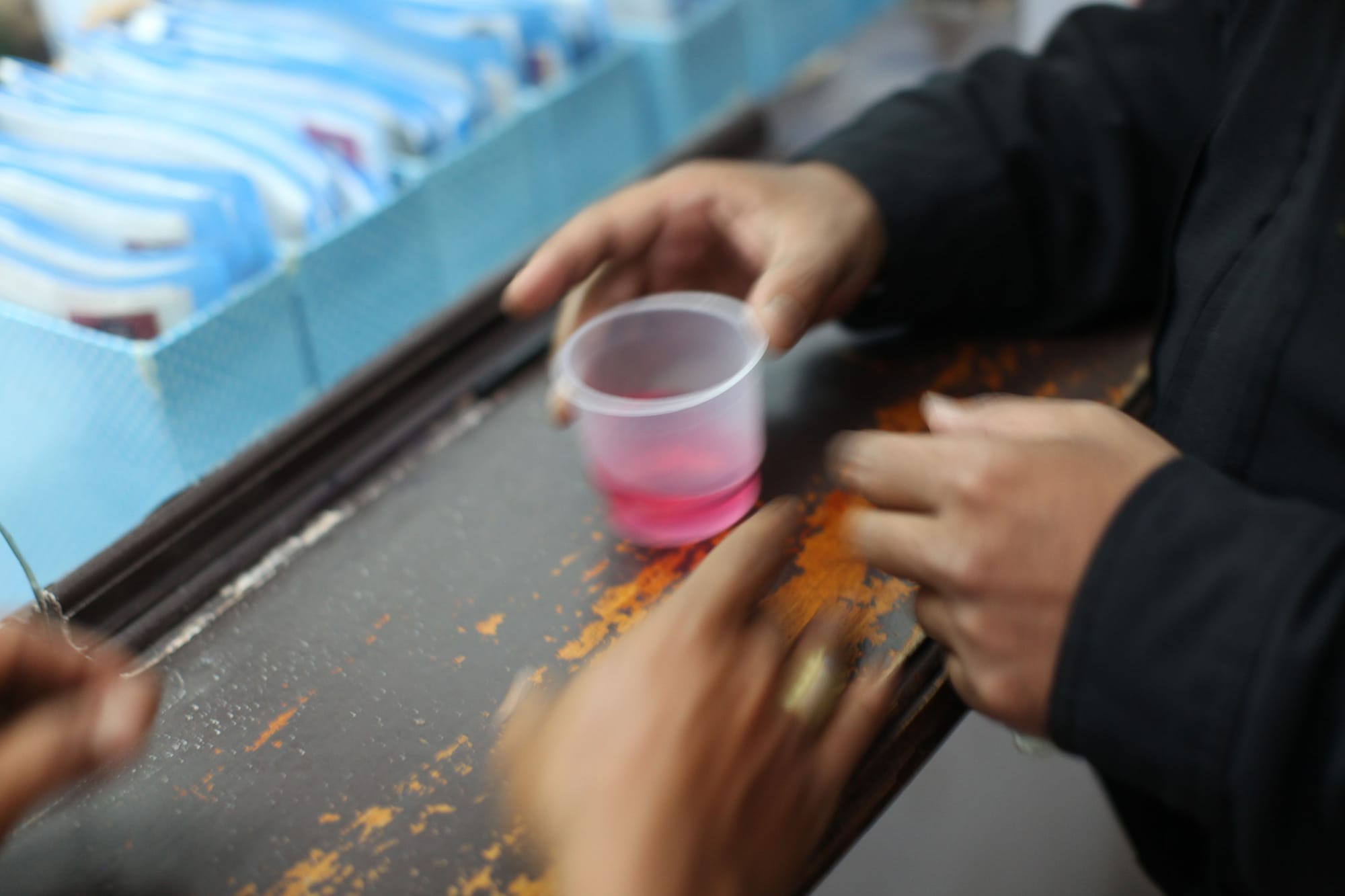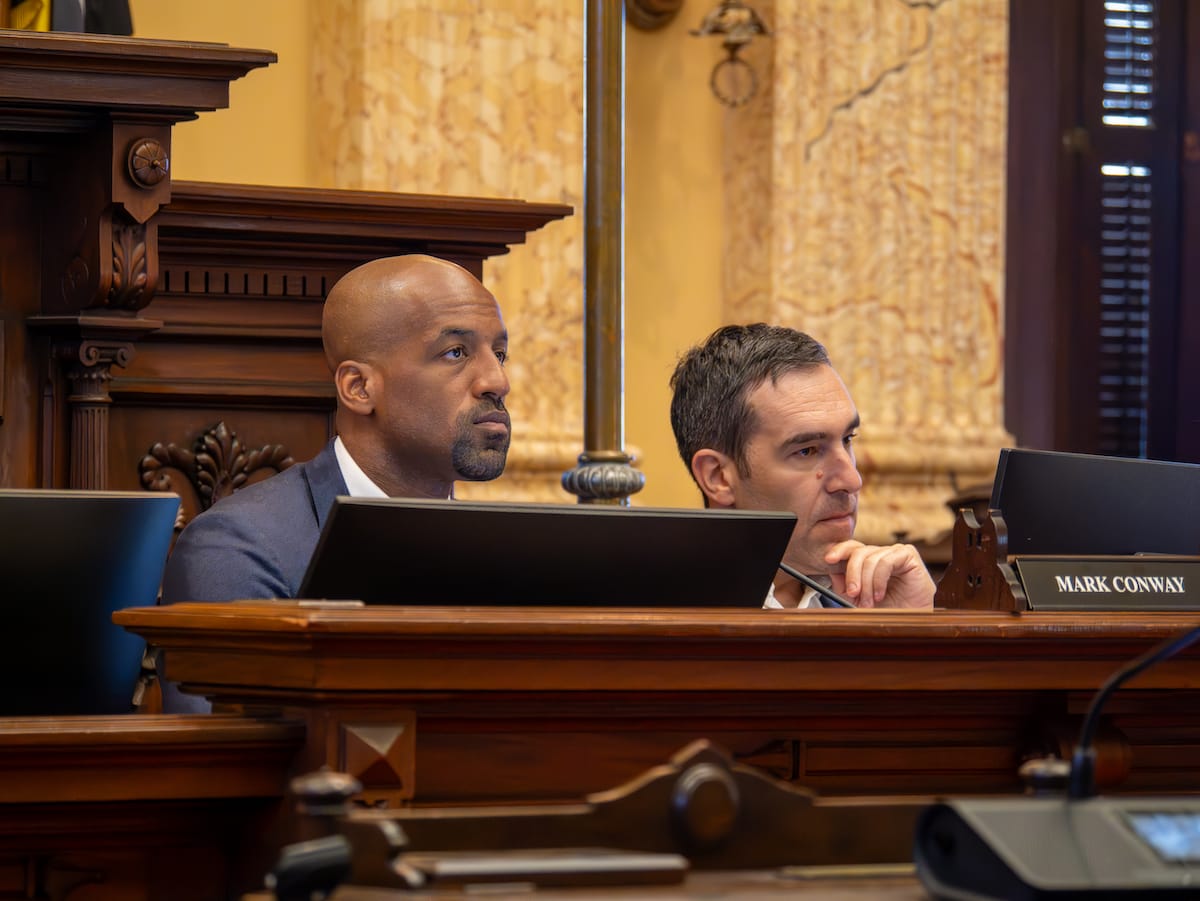
This year's legislative session in Annapolis is undoubtedly a disappointment for harm reductionists. Two crucial bills that would help prevent overdose deaths are slated for the chopping block, marking another year the suits and ties in the General Assembly fail to pass drug policy reform.
Yet it isn't a complete blowout. As bills that would legalize overdose prevention centers and decriminalize drug "paraphernalia" languished in committee on Monday — a day known as "Crossover Day," the deadline by which bills must pass one chamber to be guaranteed a vote in the other — legislation that would ramp up the drug war in Maryland also failed to make the cut. The likely death of that bill, known as "drug-induced homicide" legislation, is a cause for celebration.
“I think advocates, BHSB and our partners made a strong case that penalizing people who distribute drugs that lead to fatal overdoses will discourage the reporting of overdoses, potentially lead to more fatalities and have no discernable deterrent effect on drug selling or the prevention of fentanyl in the drug supply,” said Dan Rabbitt, policy director at Behavioral Health System Baltimore.
The bipartisan bill, versions of which have been proposed in both chambers, aims to augment drug criminalization by implementing a maximum prison sentence of 20 years for those who distribute fentanyl resulting in death.
Paired with legislation passed in 2017 which increased the maximum sentence for selling fentanyl to 30 years, it could lead to prison sentences as long as half a century — likely deterring people from reporting overdoses in which they could be found complicit.
Advocates condemn such legislation as an escalation of the drug war, citing the fact that many people charged under these laws are friends or family members who had been sharing drugs with the person who died.
In a vacuum, the bill's failure to gain traction is a bit of good news amid an otherwise disappointing legislative session. However, in the context of the escalating War on Drugs under President Donald Trump, it is a defiant victory.
This 36-year-old citizen of the Dominican Republic has a rap sheet that includes a fentanyl trafficking conviction.
— U.S. Immigration and Customs Enforcement (@ICEgov) March 17, 2025
📊Fentanyl kills 250K Americans a year.
💻Learn more about this case & others in our newsroom.
☎️Report suspicious criminal activity: 866-DHS-2-ICE pic.twitter.com/2DdXePvzXI
Earlier this week, it was revealed Trump plans to designate illicit fentanyl a "weapon of mass destruction," a move meant to pave the way for militaristic drug enforcement measures. Meanwhile, U.S. Immigration and Customs Enforcement has begun to advertise perp walks of undocumented immigrants on social media, justifying their arrests and subsequent deportations as part of a campaign to combat fentanyl trafficking.
On Monday, ICE posted on X, formerly Twitter, the arrest of a 36-year-old woman from the Dominican Republic. In the post, it mentioned her "rap sheet" included a fentanyl trafficking conviction.
ICE cited a statistic claiming fentanyl kills more than 250,000 Americans each year. However, it was problematic not only because it demonstrated the fascist, xenophobic crackdown the administration is carrying out but also because it's patently false.
Overdose deaths in the U.S. peaked in 2022, when about 108,000 fatalities were reported. Of those, about 74,000 were attributed to synthetic opioids such as fentanyl. Deaths have steadily decreased since that time, according to preliminary data from the Centers for Disease Control and Prevention.
So, where the hell is the Trump administration getting its numbers?
There isn't a good answer, as there's no factual basis behind the claims. However, Trump himself was previously called out on his lies last year after claiming there were more than 300,000 fentanyl deaths annually. It's become very clear the administration plans to inflate numbers to fuel a fearmongering campaign about drugs (and immigrants, because of course).
Fentanyl has become a rallying cry for Trump and his acolytes. He has wrongly asserted that tariffs would curb the number of immigrants smuggling fentanyl across the border — the vast majority of it is carried through legal ports of entry by American citizens — and has borrowed from the Regan playbook by demonizing minorities.
It's crucial to note, however, that it isn't just Trump doing this. Members of Congress, including Democrats, are aiding and abetting his deplorable drug war.
Last week, the U.S. Senate passed the HALT Fentanyl Act, a bill that would permanently ban fentanyl analogs under Schedule I of the Controlled Substances Act. The previous ban, implemented in 2018, was set to expire at the end of this month. Fentanyl itself would remain Schedule II.
Thirty Democrats voted for the bill, channeling former President Bill Clinton's neoliberal contributions to the racist, disastrous drug war. The legislation, which has enough support to make it to Trump's desk and be signed into law, would reschedule fentanyl analogs without input from the Drug Enforcement Administration or Food and Drug Administration.
The implications of the bill are severe, and they're perhaps best summarized by the Drug Policy Alliance:
"This counterproductive bill would permanently schedule all fentanyl-related substances as Schedule I without first testing them for benefits or harm, blocking potential research that could uncover new overdose medications. It would also entrench and expand mandatory minimum sentences for fentanyl-related substances — harsh penalties that will shatter families and communities, allow for unjust sentences that do not consider individual circumstances, and divert resources away from health interventions that are desperately needed to curb the fentanyl-driven overdose crisis."
"The Trump administration first criminalized all fentanyl-related substances in 2018. Overdose deaths rose 60% in four years — from 67,367 deaths in 2018 to 107,941 in 2022. Instead of learning from this, Congress and the Trump administration are on track to make this policy permanent through the HALT Fentanyl Act."
Unfortunately, it's become clear the federal government is driving the country back into the heydays of the War on Drugs in the 1970s and 80s. The hyper-criminalization of drug use is being justified by racist fearmongering campaigns, and the country's most vulnerable and oppressed populations will be hit the hardest.
In this context, it's no surprise the likely death of the "drug-induced homicide" legislation in Annapolis has brought some hope to those fighting the overdose crisis. Public health experts and harm reduction advocates passionately rallied earlier this month to kill the bill, and it seems as though the efforts have paid off.
With an increasingly authoritarian regime at the helm of the U.S. government, these localized efforts are imperative to protect the rights and freedom of those who use drugs.
If we don't stand up for them, perhaps no one will. And never forget: Every overdose death and prison sentence for drug-related "crimes" are not just policy failures — they're moral failures.

Earlier this week, I published a piece for Filter highlighting the two key harm reduction bills that are slated to die in committee — again:
Harm reduction advocates in Maryland have fought for years to get lawmakers to pass legislation to prevent overdose deaths. After a pair of bills missed a key deadline, they face bitter disappointment once again.
March 17 was “Crossover Day” in Maryland—the date by which bills must pass one chamber of the General Assembly in order to be guaranteed a vote in the other by the end of the legislative session in April. As lawmakers rushed to pass numerous bills, those cross-filed in both chambers that would legalize overdose prevention centers (OPC) and decriminalize drug “paraphernalia” languished in committee.
When the deadline passed at midnight, neither had proceeded to a floor vote.
Click here to read the full article.
Mobtown Redux's Overdose Data Dashboard has been updated with the latest local, state and national data. Check it out here:
Preliminary data recently released by the Maryland Department of Health covers total overdose deaths in the 12-month period ending in February. Overall, deaths have continued to trend downward.
There were 633 OD deaths reported in Baltimore, a death rate of 108.1 per 100,000 people. The highest concentration of deaths remains in the Black Butterfly, specifically in West Baltimore.
Statewide, there were 1,463 deaths. Besides the city, the counties with the most deaths were Baltimore County, Prince George's County and Anne Arundel County, which saw 166, 148 and 109 deaths, respectively.
Click here to learn more about harm reduction resources in the Baltimore area.
Facts, not fear: Inside Mexico’s pioneering drug harm reduction programs, the Associated Press reports:
Under warm strobe lights and pulsing house beats, a recent festival in Mexico City offered more than music, food and booze. Amidst the usual festival fare, a booth provided free, anonymous drug testing.
The initiative, known as “Checa tu Sustancia” (Check Your Substance), is one of several recent efforts by Mexican civil society to reduce risk among people taking drugs. Spearheaded by the Instituto RIA, a Mexico-based drug policy research and advocacy organization, it aims to address drug use from a public health and social justice perspective, rather than a security one.
In a well-lit corner of the festival, members of the Instituto RIA used reagents and laboratory porcelain plates to test substances that some of the partygoers planned to use and recorded the data. Their analysis uses color changes to indicate what’s in the drug: It can reveal the presence of adulterants but not their exact proportion.
Click here to read the full article.









Comments